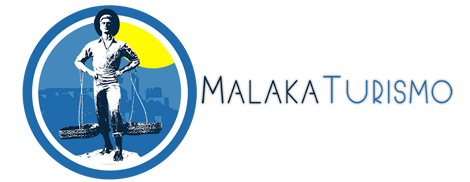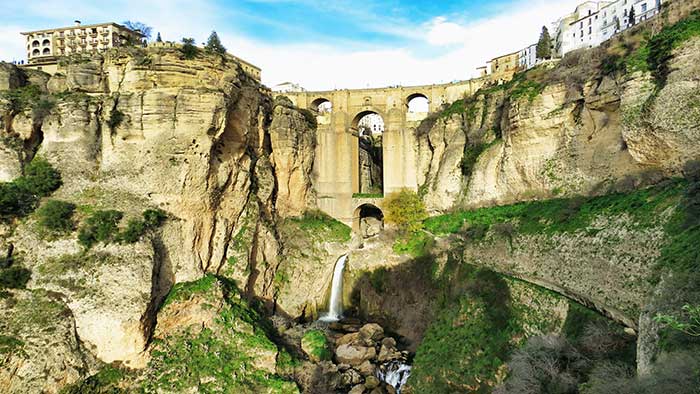There are several destinations in the province of Malaga that would be the envy of a fairy tale or an episode of a Hollywood blockbuster such as Game of Thrones. One of them is the small town of Ronda, an enclave located in the inland area of the province of Malaga at 750 metres above sea level. If you want to know what to see and do in Ronda, read on. This post is for you.
When talking about Ronda, you will surely think of its sturdy bridge that rises over a 500-metre-long deep gorge (the Tajo). The New Bridge was built between 1751 and 1793 and is the most characteristic postcard of the city.
It is also the artery that splits the town in two, which is mainly divided into the traditional area of the city (of Roman and medieval origin), and that of the Barrio del Mercadillo. At the bottom of the Tajo canyon, at a depth of about 100 metres, is the Guadalevín river, which murmurs through the tourist area of the viewpoint.
The beautiful mountain town has other gems that we will discover below.
THE NEW BRIDGE
As it could not be otherwise, we start with the characteristic postcard of Ronda: The New Bridge. A beautiful building which, as mentioned above, dates back to the end of the 18th century, its construction being completed in 1793.
Although the truth is that the New Bridge was inaugurated in 1735, it was a flood of the river Guadalevín that carried away the initial construction, being the end of the 18th century the inauguration of the reconstruction.
The main purpose of the bridge was to link the historic city with the new part that was being built during that century, and which would continue to gain importance during the early 19th century with the construction of the railway.
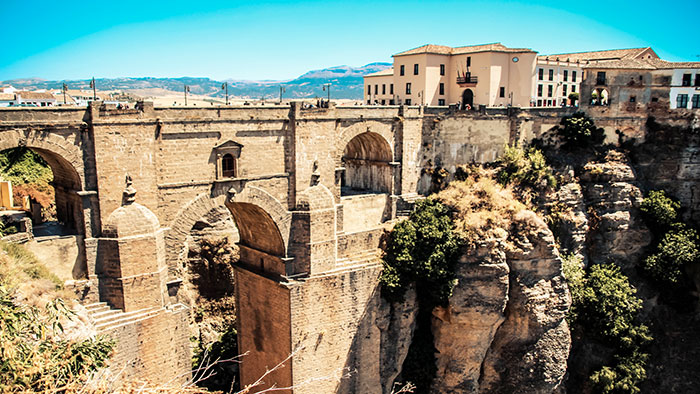
Between the New Bridge and the Parador de Ronda we find the New Bridge Interpretation Centre, which tells the story of its creation, its anecdotes and its journey through time. All this, through a visual tour and several explanatory panels.
Ticket price:
Adults: 2€
Groups from 10 persons, under 26 years old and retired persons: 2€
Children under 14 years of age: free
The opening hours are: Monday to Friday: from 10.00 a.m. to 7.00 p.m.
Saturday, Sunday and public holidays: 10.00 a.m. to 3.00 p.m.
SOCORRO SQUARE
If we start to wander around Ronda we will come to one of the city’s nerve centres, the Plaza del Socorro, where we will also find a beautiful neo-baroque church of the same name.
The Church of El Socorro is a modern construction by the Malaga architect Enrique Atencia, built between 1950 and 1956, to occupy the space of an old hermitage that was destroyed in 1936. Its origins go back to a hospital for the poor and pilgrims that was called El Socorro. This hospital was consecrated on 2 November 1557 by Don Francisco de Pacheco de Córdoba, Bishop of Málaga.
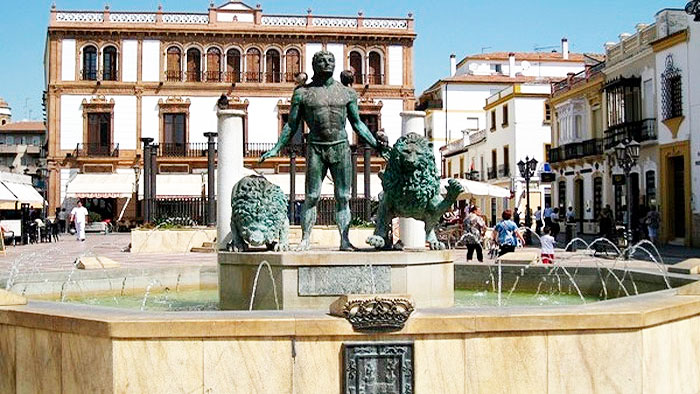
DUQUESA DE PARCENT SQUARE
One of the most characteristic and well-known squares in Ronda for its beauty. The Duquesa de Parcent Square was the administrative centre of the city during Moorish rule and housed the main buildings of the time.
Here we can find the Church of Santa María la Mayor, built on the site of the old main mosque during the 16th and 18th centuries, in Gothic and Renaissance styles. In fact, remains of the mosque, such as the mihrab, are still visible in the church.
Entrance fee to Santa Maria la Mayor:
Adults: 4,50 €
Groups and retired persons: 3 €
Students and disabled persons: 2 €
Children under 10 years of age: free
The opening hours are:
Monday to Saturday: from 10.00 am to 8.00 pm.
Sunday: from 10.00 a.m. to 12.30 p.m. and from 2.00 p.m. to 8.00 p.m.
Other buildings to be found in the Duquesa de Parcent Square are the Town Hall of Ronda, which dates from 1734 and was originally used as a militia barracks, and the Convent of the Poor Clares of Santa Isabel de los Ángeles. This simple convent dates from the 16th century and on its portico we can still make out the stone coat of arms of the Order of St. Francis.
BULLRING OF RONDA
The Bullring is one of the most representative and iconic buildings in the city of Ronda. It is located in the heart of the city centre, from where you can easily access several of the attractions discussed in this post.
This bullring was designed by the architect Martín de Aldehuela, the same architect who designed the famous Puente Nuevo (New Bridge) and was built between 1780 and 1785. This bullring is considered an Asset of Cultural Interest and is considered the oldest bullring in Spain. It has a capacity for 5,000 people, with a beautiful covered grandstand.
It belongs to the Real Maestranza de Caballería of Ronda, which was founded by King Felipe II in 1572 as a military and equestrian school for the nobles of the area. The Ronda bullring is also one of the cradles of modern bullfighting, as it is said that bullfighting was born in Ronda.
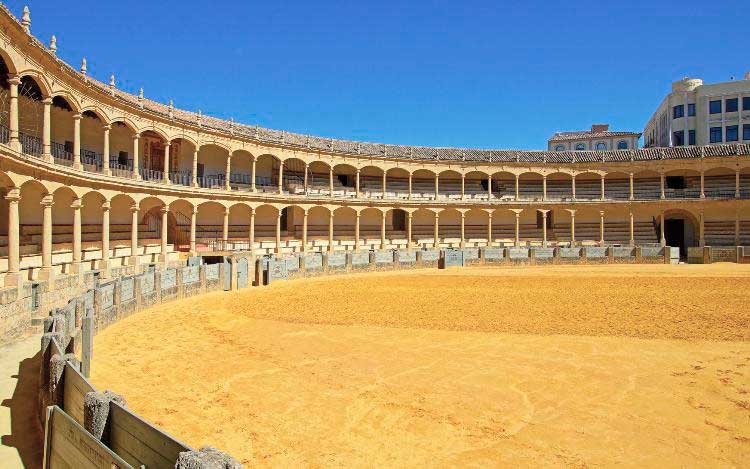
We can also find the Bullfighting Museum which tells the story of two dynasties of Ronda bullfighters, the Romero and the Ordoñez. Nearby is the famous sculpture of the Bull, which pays homage to the bull of “lidia”.
The price of the entrance to the Bullring in Ronda:
Adults: 8 € or 9,50 € with audio guide.
Groups from 15 persons: 6 €
Free admission: or EU citizens on Mondays (from 8.00 to 10.00), Tuesdays and Wednesdays (from 9.00 to 10.00).
BLAS INFANTE PROMENADE
While we are at the Bullring in Ronda let’s take some time to stroll through the Blas Infante Gardens. This pretty little park is in an ideal location for a bit of peace and relaxation in the centre of Ronda.
It is dedicated to the memory of this politician from Malaga who defined the current concept of Andalusianism as an autonomous entity in federal Spain. It was precisely Blas Infante who chose Ronda as the site for the celebration of the Andalusian Congress in 1918.
That meeting was key for all Andalusians, as it was there that the symbols of the Andalusian homeland were adopted, such as the flag and the coat of arms of the Autonomous Community of Andalusia..
At the entrance to the park we can also see a beautiful monument in memory of the American writer Ernerst Hemingway, a great bullfighting fan, who also stayed in Ronda during the summer of 1959.
PALACE OF MONDRAGON
In the Mondragón Square we can see this beautiful Mudejar-Renaissance style building that was built during the Arab domination in the 14th century. It is in this palace that the Benimerid king Abd al-Malik, son of the Sultan of Morocco Abu al-Hasan, may have resided.
Today this building houses the Municipal Museum of Ronda, where you can learn a lot about the history of the city throughout the passage of all civilisations. In addition to the beauty of the complex, the Palace of Mondragon has beautiful gardens where you can take a pleasant stroll.
Admission to the Municipal Museum is 3,75€, with free admission for all EU citizens on Tuesdays, from 3 p.m. until closing time.
ARAB BATHROOMS
In the San Miguel neighbourhood you will come across one of the best preserved Arab baths in the Peninsula. The Arab Baths of Ronda were built between the 13th and 14th centuries as a place of rest and relaxation for the city’s inhabitants.
With the Christian reconquest, the baths fell into disuse and were buried in oblivion and the subsequent flooding of the Guadalevín river. It was the Duchess of Parcent who found the remains of these baths when she built gardens in the area. It was the State that acquired the rights to this area in 1935.
The building is divided into three bathing rooms: cold, warm and hot, covered by barrel vaults with star-shaped skylights.
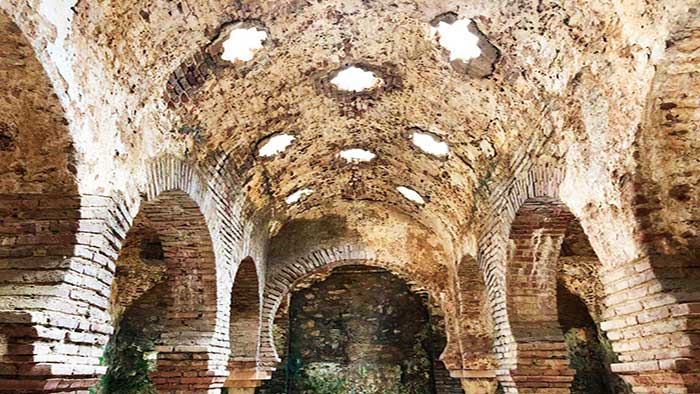
Entrance fee to the Arab Baths of Ronda:
Adults: 3,75 €
Groups of more than 10 persons, students under 26 and retired persons: 2,75€
Children under 14 years of age: free
The opening hours are: Monday to Friday: from 10 am to 7 pm.
Saturday, Sunday and public holidays: from 10:00 am to 3:00 pm
ALACE OF THE MOORISH KING
Crossing the bridge and going down the “Cuesta de Santo Domingo” we can reach the vicinity of the Palace of Moorish King, an 18th century palace which, although it does not accept visitors, has as its main attraction the gardens designed by Jean Claude Forestier in 1912.
From the gardens we can access the water collection mine, which dates back to the Arab reign in the city. The purpose of these water reservoirs was to supply the city with fresh water in the event of the water reservoirs being moored.
Even today it is still possible to go down to the end of the mine via a system of stairs. From the gardens of the Palace of Moorish King we can access its more than 230 steps that allow us to go down to the banks of the Guadalevín river.
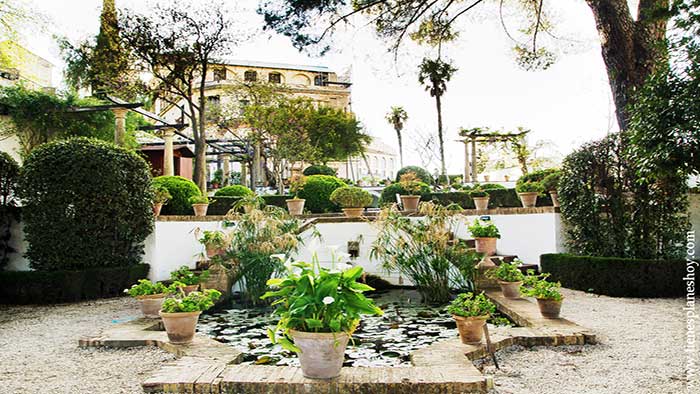
ALDEHUELA VIEWPOINT
The Aldehuela viewpoint is one of the viewpoints you cannot miss on your visit to Ronda. It is located just past the New Bridge, next to the Convent of Santo Domingo. From here you can enjoy views of the bridge, the valley of the river Guadalevín and the nearby hills of the Serranía de Ronda. The viewpoint is named after the architect of the “Puente Nuevo” and the Bullring of Ronda.
“DEL COÑO” BALCONY
When walking along the Alameda del Tajo you will find this viewpoint, which is popularly known by this name because when you see the views, you literally exclaim: “¡Coño! as a gesture of surprise!
HISTORY OF THE CITY OF RONDA
The surroundings of Ronda already have important vestiges of the past and are ideal for the culmination of a culturally tinged trip. Although Ronda has excavations with evidence of Neolithic settlements, there is a cave to the southwest of the city that proves the existence of civilisation in the area since the Palaeolithic period more than 12,000 years ago.
We are talking about the Pileta Cave, in Benaoján, which includes a series of cave paintings in a good state of conservation. Its are open to the public and guided tours are available for groups of 25 people. The entrance fee to the Cueva de la Pileta is €10.
Just 20 km north of the town we can also see the remains of the Roman settlement of Acinipo. The famous Roman historian Pliny, in the 6th century B.C., named Ronda in one of his scrolls as Arunda, pointing to the Iberians as the founders of the nearby settlement of Acinipo.
However, Acinipo was more important than Ronda during Roman times, becoming one of the most important cities in the province of Baetica, with its own currency and set of laws. General Scipio founded military orders in Arunda, which according to some historians founded the Castle of Laurel or Laurus with the intention of keeping watch over the Celtiberian tribes.
The Castle of Laurel or old Alcazaba of Ronda is located up the “Cuesta de las Imágenes”. The remains we can see today are Nasrid, as it was the Arabs who rebuilt it.
We could say that Acinipo and Ronda have passed through all the civilisations throughout history, for after the fall of the Roman Empire, they passed through Germanic, Byzantine, Visigothic and later Muslim hands, who called the city Izna Rand Onda. The Castilian conquest reached Ronda in 1485 under the reign of the Catholic Monarchs.
During the 17th century, Ronda lost its socio-economic importance and entered a phase of decadence, which was resolved with the construction of the New Bridge in the 18th century, linking “the Mercadillo” neighbourhood and the beautiful Bullring.
The French invasion by Joseph Bonaparte in 1810 brought negative damage to Ronda, such as the dynamiting of a large part of its heritage such as the Castle of Laurel. At the end of the 19th century, with the construction of the railway and the improvement of the road infrastructure, Ronda once again began to develop and was connected to the province.
Plan your excursions to the most iconic places in Malaga, such as the Caminito del Rey, Ronda, Setenil de las Bodegas, Marbella… Choose where and when, and we’ll take care of the rest.
RESERVATION
In the following posts we will tell you more about the history of this magical enclave in the middle of the Malaga mountains, how to get there and how to make the most of the day among some of its less touristy secrets.
-FEATURED POSTS-
